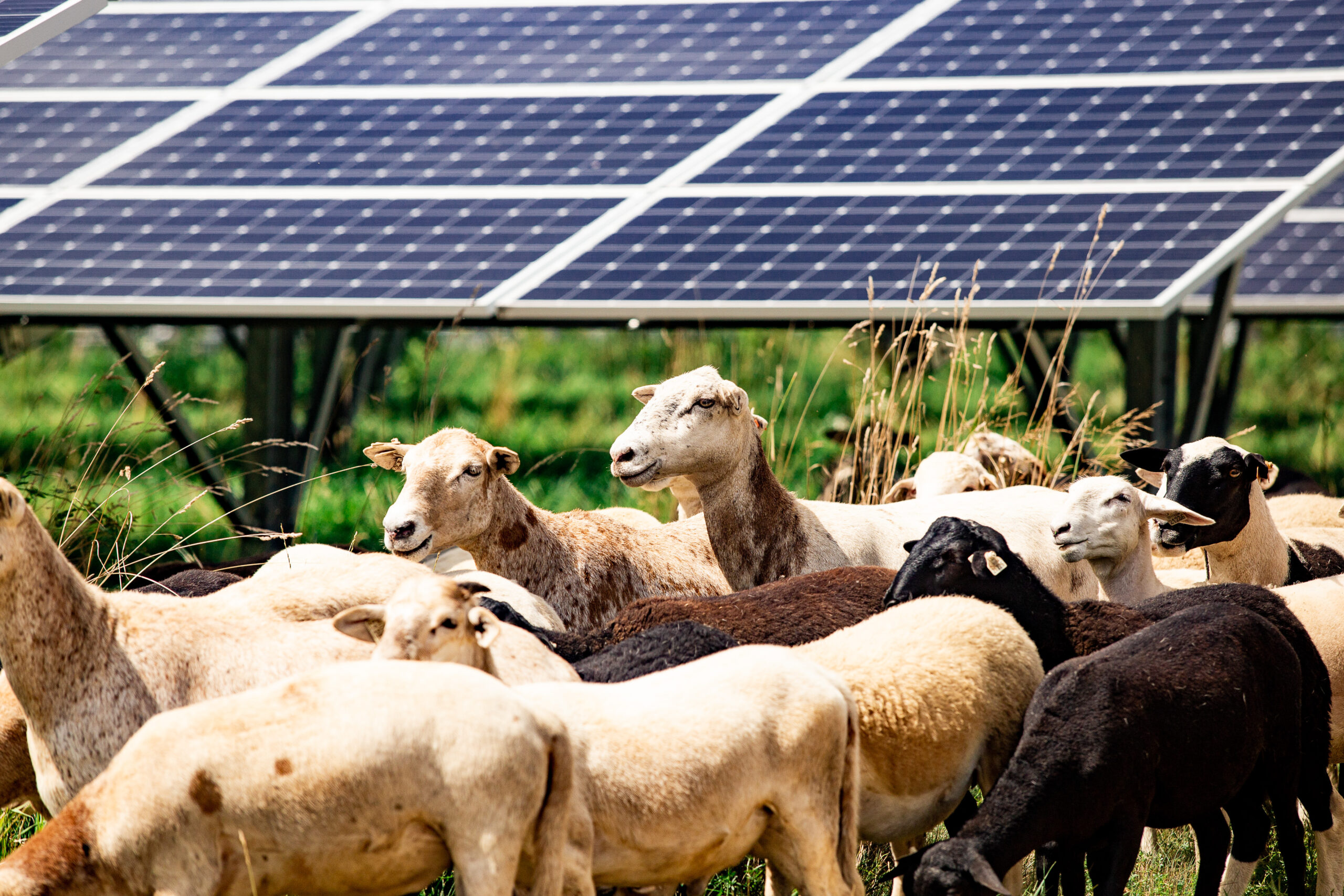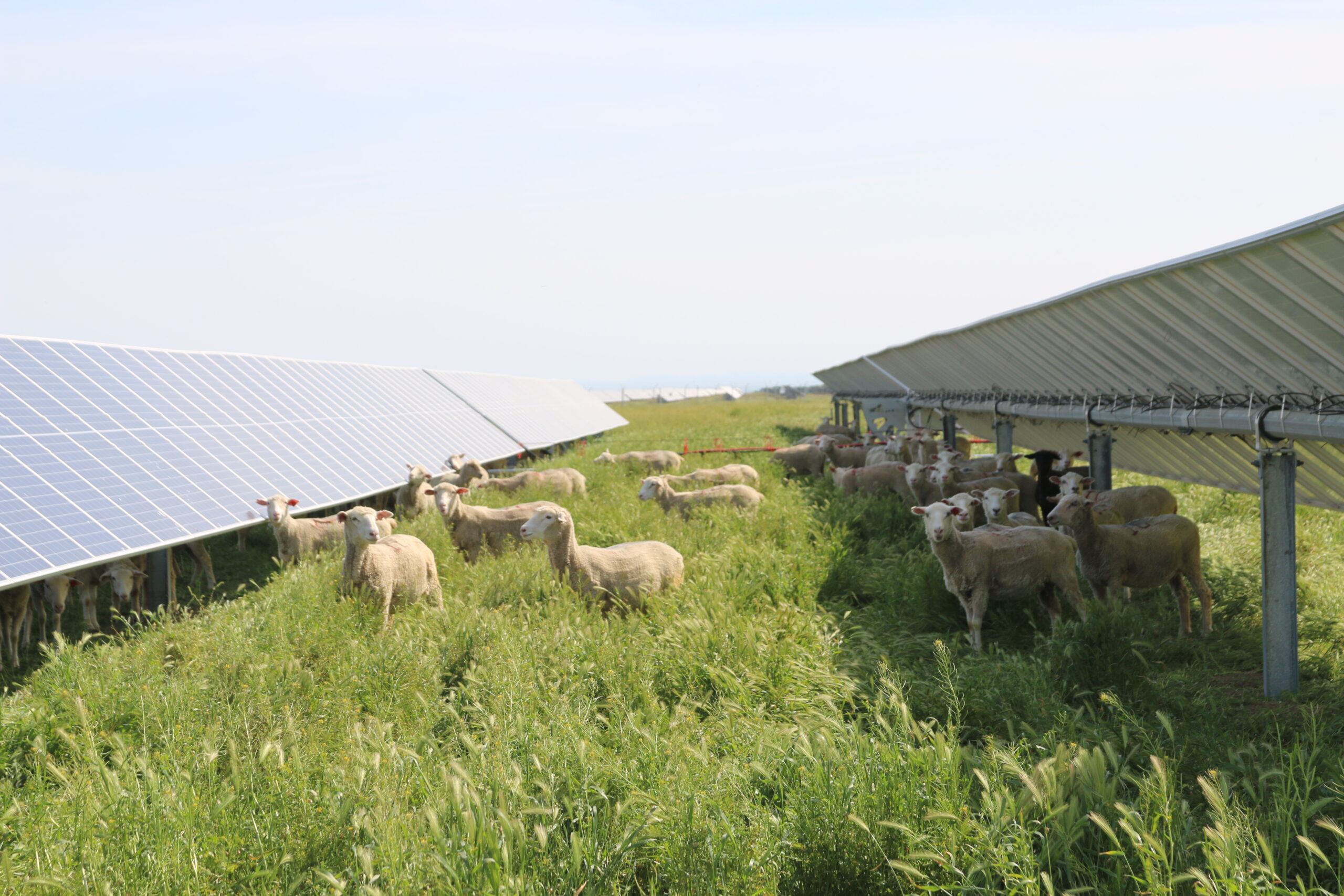Solar is the fastest growing energy source in the United States with 45% of all new electric capacity added to the grid in 2023 coming from solar. With solar developments popping up in communities throughout the nation, predominately in rural agricultural communities, citizens are becoming increasingly concerned with the amount of farmland being transitioned to energy production, in some cases amounting to the restriction of renewable energy reaching its full potential.
In reality, only 1% of our nation’s farmland would be required to produce 20% of our electricity – with solar currently only accounting for 5.77% of energy production.
But what if we said that even that 1% of land could continue to serve as productive farmland while producing clean energy? Agrivoltaics does exactly that!
Our team recently sat down with Caleb Scott, founder of United Agrivoltaics, a farm partner group providing expertise and services to solar developers across the US to manage vegetation on solar farms using a variety of grazing animals. Mr. Scott believes that integrating agriculture and photovoltaic energy generation, or Agrivoltaics as it is commonly known, is the ultimate win – a win for agriculture, a win for the environment, and a win for renewable energy developers. Caleb and his team are focusing on a specific type of Agrivoltaics that has the potential to open doors to entirely new markets in the US: Solar Grazing.

What is solar grazing?
All solar developments use vegetative controls of one form or another. Vegetation beneath panels is predominately kept in check by way of traditional mowing with lawnmowers and weed whackers. But in the past few years, some solar farms have been introducing livestock as their primary vegetative control method, and has proven itself not just a viable alternative to traditional mowing, but a better one.
 “Sheep grazing between the rows of Mustang 2 Solar” by AgriSolar Clearinghouse is licensed under CC BY 2.0.
“Sheep grazing between the rows of Mustang 2 Solar” by AgriSolar Clearinghouse is licensed under CC BY 2.0.
Agricultural benefits
The primary and most obvious benefit of Agrivoltaics of any kind is that it allows for dual-purposed land use encompassing both agricultural practices and energy production simultaneously. This means that both practices are made more efficient and, not surprisingly, more productive.
Incorporating solar energy generation on a farm provides an additional revenue stream to a farm’s operations. For many smaller farms, this added income can mean continuing operations or selling them out and perhaps discontinuing operations altogether. On average, solar farms generate $500-$2,000 per acre per year – meaning that an average solar farm of 40 acres can provide an additional $50,000 per year to a farmer.
In addition, if the system is grazed, rather than planted, the soil is given a chance to recover from nutrient depletion and is regenerated for future harvests.
Environmental benefits
Soil regeneration is also a huge environmental benefit of solar grazing. Having grazers maintain vegetation beneath photovoltaic systems further assists the land in its regenerative process, as the grazers’ feces act as manure, fertilizing the ground naturally. This practice effectively eliminates the need for fertilizers while mitigating the need for traditional vegetation controls involving fossil fuels – all while the system creates clean, renewable energy.
Economic benefits
Agrivoltaics also makes sense from a financial standpoint. The integration of agriculture and photovoltaic energy production lends itself to multiple revenue sources.
Revenue streams associated with the solar energy system benefit both the solar project’s owner/operator as well as the landowner. The project’s owner/operator benefits from the income associated with the energy produced by the system, and the landowner receives a revenue stream from the solar project’s owner for the use of their land.
The sources of revenue associated with solar grazing benefit the grazer. Grazing beneath solar panels allows for higher stocking density compared to traditional field grazing, reducing the amount of land needed per head of livestock, making solar grazing a more cost-effective way of pasture raising.
In addition, solar grazing is less labor intensive than traditional vegetation maintenance and eliminates the need for fertilizers and pesticides, cutting down on expenses, all while adding to revenue streams.
All in all, solar grazing is a solution that addresses all stakeholder interests. Landowners (farmers) can continue operations and pass the farm to the next generation, grazing practices benefit the environment by regenerating farmland while keeping it active and productive, and solar generates clean green energy at a discounted rate for residents.




